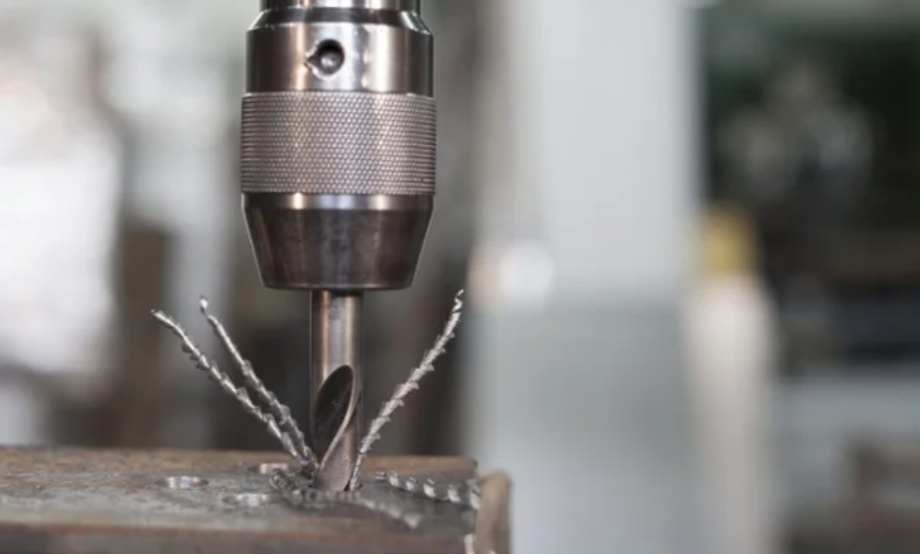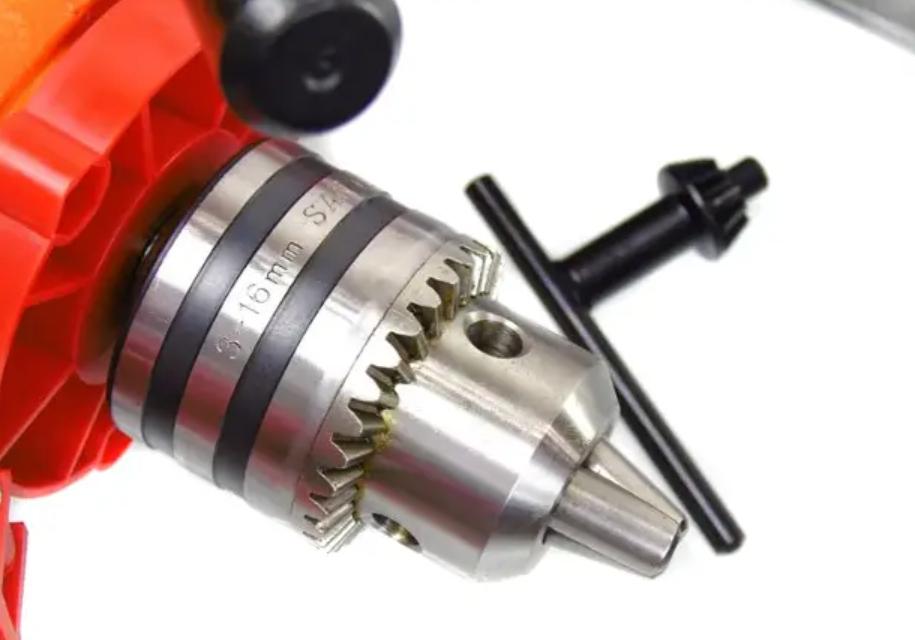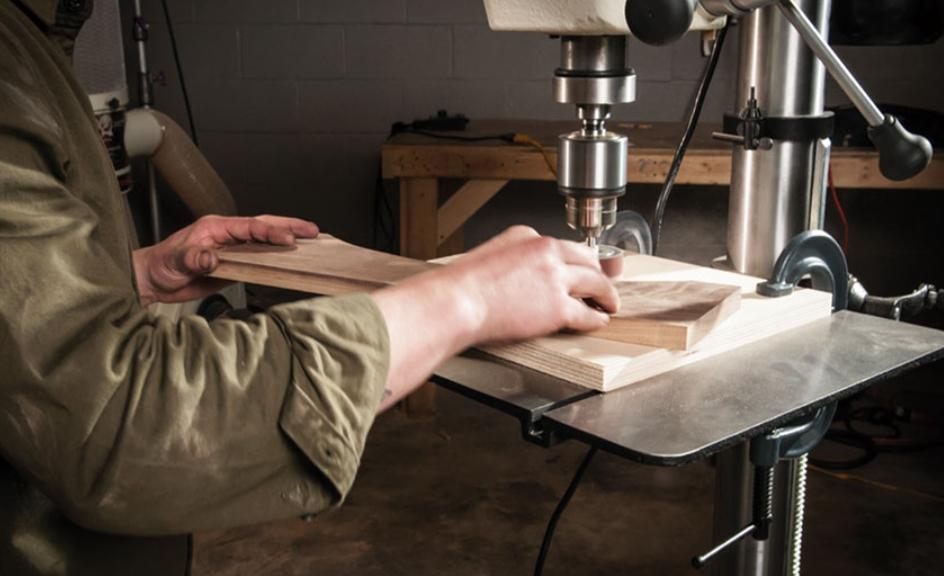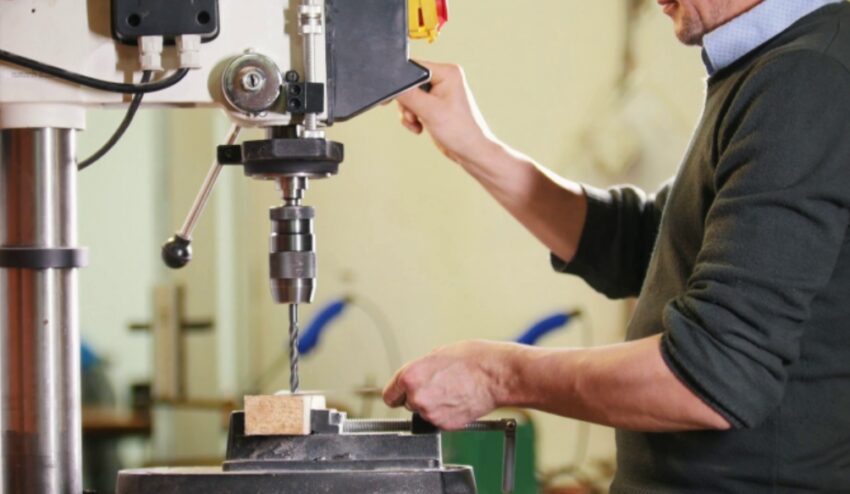A master working with wood or metal, when processing parts, will certainly face the need to make holes. An arbitrary diameter can be drilled with an electric drill, but this tool will not give the ideal marking size and high quality drilling.
You can quickly and accurately drill holes, through or blind, of different diameters and depths, only using a drilling machine. The direct purpose of this device is to drill and ream, cut threads, providing high accuracy according to the given dimensions.
About how to choose a drilling machine, what are its varieties, and for what tasks are different types of machines, I will tell in this article.
How a typical drilling machine works
The drilling machine is a very functional and multitasking device. With knowledge of its structure and principles of operation, you can easily make the right choice of a drilling machine for a home or for a car service, furniture, carpentry, turning workshop or for a production workshop.

Both household and industrial drilling machines are designed in the same way. The basic design of a machine for drilling and forming holes in metal or wood includes four main blocks:
- Support base;
- Drilling head;
- Electric drive;
- Controls.
The base is a massive slab. As a rule, it is cast, made of steel or cast iron. The plate performs two tasks – it eliminates vibrations and vibrations, and also serves to fasten the vise. It has longitudinal grooves for fixing the vertical rack. This stand is made in the form of a column and drilling equipment is attached to it. Benchtop drilling machines are fixed on a large table with the help of a base.
The drilling block is a drilling head with a spindle head and a chuck. A nozzle (drill or cutter) is inserted into the cartridge.
An electric motor transmits torque using a belt drive (belt and pulleys). It provides movement of the headstock with a chuck and a drill. The spindle rotates (this is its main movement), and also moves vertically (auxiliary movement).
The machine controls include the keys for turning the equipment on and off, adjusting the speed of rotation, as well as the feed handwheel (this is a handle-wheel, which is located on the side of the body).
Where to start choosing a drilling machine
When choosing a drilling machine for a home workshop, its dimensions should be taken into account. The room in which the home master works is often very small. That is, the dimensions of the machine must be small so that it is convenient to work on it. We take the same into account when choosing such a machine for a garage.
If you plan to drill holes in hard-to-reach places or on stationary equipment that cannot be disassembled, then you need to buy a magnetic drilling machine. It is attached with magnets in any place, narrow, at a height. Cuts threads in any position, makes blind holes of the required depth. It is also important that such a device has smooth speed control, reverse and universal spindle mount Morse taper. Pay attention to the automatic coolant supply. This feed system is also relevant in production, where mass holes are made in parts.
In addition to dimensions, the choice of a drilling machine for homework, we start with the power of its engine. Household workbenches can have an electric drive in the power range from 250 W to 1 kW. If you buy a machine for wood, then we select the power up to 600 watts. It is also suitable for thin sheets of metal (up to 10 mm thick). If you need to drill thicker metal blanks, then you need to take a device for working on metal with a power of at least 1 kW.
Leading Selection Options

The main technical characteristics that you need to pay attention to when choosing a drilling machine:
- Hole drilling diameter. Low-power machines drill with a standard cylindrical drill, the maximum size is up to 16 mm. If you drill with a core drill, then a household machine with a power of up to 1 kilowatt allows a diameter of 10 to 35 mm. If you need large holes (50-60 mm), then you need to take a middle-class machine (1.5-2 kW). The most powerful industrial machines are capable of drilling holes up to 130 mm in diameter.
- Smooth switching of speeds. When choosing which drilling machine is better, pay attention to smooth adjustment. This function is necessary for boring, reaming, threading.
- Reverse (reverse). It is needed when making holes with threads, right and left.
- Shank type. The best quick-clamping, universal (One-touch type). A Weldon shank clamp is also common.
- Spindle chuck seat type. In addition to the Weldon and One-touch shanks already mentioned, you can adapt a Morse taper shank to the seat. It involves installation options for a thread-cutting chuck, a standard drill, a boring head.
- Weight and dimensions. These positions are important if you plan to work in a small room, directly on stationary equipment, at height, or if the machine needs to be moved frequently.
- Automatic coolant supply. This function is effective in mass production. It is also important for a stable drill feed if the device is attached in a hard-to-reach place.
- Motor power. This parameter determines the productivity of the machine, the ability to drill in different materials, work with different thicknesses of workpieces. But the higher the power, the more electricity will be consumed. Therefore, for drilling wood in a home workshop, we take up to 600 W, and for drilling metal – up to 1 kW.
Intended mode of use and operation
At home, the machine can operate in two modes:
- Short-term repeated (in most cases);
- Continuous.
The first option just involves the use of household drilling machines (up to 1 kW of power). They have low-power engines, which, moreover, are not resistant to overheating. Therefore, the machine must be turned off for a while and allowed to cool down, otherwise the motor will fail very quickly. Permissible continuous operation time is always indicated in the equipment passport.
Professional machines (over 1 kW) are equipped with an electric drive, which is adapted to loads and long-term work. It has an efficient cooling system and durable mechanisms.
What are the types of drilling machines, and what tasks do they perform
The main function of a drilling bench is to make holes. However, different design modifications make it possible to perform completely different drilling. For home carpentry and locksmith work, for a furniture or turning workshop, you can purchase the following types of drilling machines:

1. Vertical drilling machine is the most popular type. It has a vertical stand – a column, the spindle rotates and moves in the vertical direction, the part moves depending on its position. We distinguish three groups of such devices.
- Low-power lightweight desktop type (drilling diameter up to 16 mm, drive power up to 600 W). Suitable for wood and thin sheets of metal;
- Medium-power (drill holes from 18 to 50 mm);
- Heavy appliances with 75 mm hole punching capability.
2. Radial drilling machine. In them, the spindle moves so as to align the axis of the hole and the equipment. Very handy when working with large workpieces.
3. Horizontal drilling. Make very deep through holes. Their scope is metal rolling, production of pipes, engine shafts.
Single spindle. They drill small holes. In production, such machines are used in the instrument-making field;
Multi-spindle. The machine is equipped with several spindle headstocks. Makes not one hole, but several at the same time.
This classification divides machines into types, according to their design. However, you can find other ways to divide drilling machines into types, for example, according to the functions performed, the degree of automation. Now, knowing how the drilling machine works and how it works, you can easily choose the right type of equipment for your tasks, choose the required power and type of machine.
